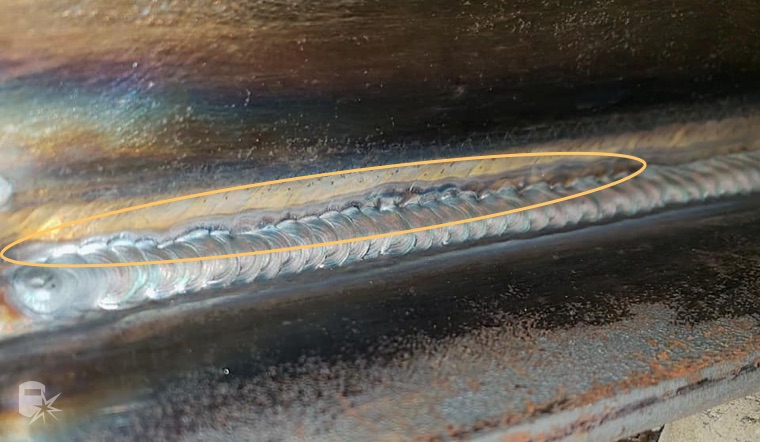Grasping the Art of Welding: Exactly How to Stay Clear Of Undercut Welding Issues for Flawless Construction Results
Efficiency and accuracy are extremely important worldwide of welding, where even the tiniest imperfection can compromise the structural integrity of a fabricated piece. One common challenge that welders face is damaging, a problem that can lead and weaken a weld joint to pricey rework. By recognizing the source of undercut welding and executing effective methods to stop it, welders can boost their craft to brand-new levels of quality (Preventing weld undercut). In the pursuit of flawless manufacture outcomes, understanding the art of welding to prevent undercut concerns is not just an ability however a necessity for those pursuing excellence in their work.
Comprehending Undercut Welding

To avoid undercut welding, welders ought to guarantee proper welding parameters, such as readjusting the current, voltage, travel rate, and maintaining the correct electrode angle. Additionally, using the suitable welding strategy for the specific joint setup is crucial. Employing weaving motions or backstepping methods can help make certain proper weld steel deposition and lower the chance of undercut formation. Routine assessment of welds during and after the welding process is likewise important to catch any kind of undercut very early and make essential adjustments to avoid more problems. Preventing weld undercut. By recognizing the causes of undercut welding and implementing preventative steps, welders can attain premium, structurally sound welds.
Sources Of Undercut in Welding
Comprehending the elements that add to damage in welding is important for welders to create top notch, structurally sound welds. Poor welding present or wrong welding speed can likewise contribute to undercut. Comprehending these causes and executing correct welding methods can help stop damaging problems, making sure strong and long lasting welds.
Techniques to Stop Undercutting

To reduce the danger of undercutting in welding, welders can utilize strategic welding strategies intended at enhancing the top quality and honesty of the weld joints. One effective technique is to readjust the welding criteria, such as voltage, current, and travel speed, to make certain appropriate warm input and deposition. Preserving an appropriate electrode angle and making certain regular traveling rate can additionally aid protect against undercut. In addition, making use of the correct welding method for the certain joint arrangement, such as weave or stringer grains, can add to minimizing damaging. Preventing weld undercut.
Furthermore, appropriate joint prep work, including guaranteeing clean base products complimentary of contaminants and using the appropriate welding consumables, is essential in preventing undercut issues. Utilizing back-step welding techniques and regulating the weld grain profile can additionally assist distribute warmth evenly and decrease the danger of undercut. Regular examination of the weld joint throughout and after welding, as well as carrying out high quality assurance procedures, can aid in addressing and detecting damaging issues without delay. By visit their website executing these strategies carefully, welders can achieve remarkable manufacture results with very little undercut flaws.
Importance of Correct Welding Parameters
Picking and keeping suitable welding criteria is essential for accomplishing effective welds with marginal issues. Welding specifications refer to variables such as voltage, present, travel rate, electrode angle, and securing gas flow price that directly affect the welding process. These criteria have to be meticulously adjusted based upon the kind of product being bonded, its density, and the welding technique used.
Appropriate welding parameters guarantee the correct amount of warmth is used to thaw the base steels and filler product consistently. If the criteria are established also high, it can bring about too much warmth input, creating spatter, distortion, or burn-through. On the various other hand, if the criteria are also reduced, incomplete fusion, absence of infiltration, or damaging may occur.
Quality Control in Welding Workflow

Conclusion
In conclusion, mastering the art of welding calls for a thorough understanding of undercut welding, its causes, and techniques to avoid it. By making certain appropriate welding parameters and implementing quality control practices, flawless fabrication outcomes can be accomplished. It is important for welders to constantly pursue excellence in their welding operations to avoid undercut concerns and create top quality welds.
Undercut welding, a common flaw in welding processes, takes place when the weld metal does not correctly load the groove and leaves a groove or anxiety along the bonded joint.To avoid undercut welding, welders should make sure proper welding specifications, such as changing the current, voltage, traveling rate, and preserving the proper electrode angle. Inadequate welding incorrect or existing welding speed can likewise add to damage.To reduce the risk of damaging in welding, welders can employ calculated welding strategies aimed at improving the top quality great post to read and integrity of the weld joints.In final thought, mastering the art of welding needs a comprehensive understanding of undercut welding, its causes, and methods to stop it.